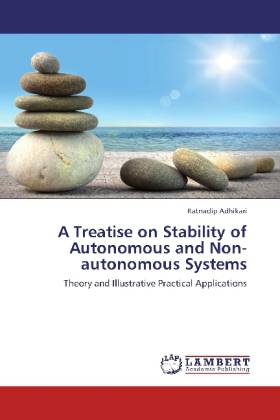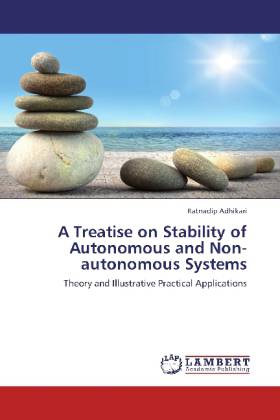
- Afhalen na 1 uur in een winkel met voorraad
- Gratis thuislevering in België vanaf € 30
- Ruim aanbod met 7 miljoen producten
- Afhalen na 1 uur in een winkel met voorraad
- Gratis thuislevering in België vanaf € 30
- Ruim aanbod met 7 miljoen producten
Zoeken
A Treatise on Stability of Autonomous and Non-autonomous Systems
Theory and Illustrative Practical Applications
Ratnadip Adhikari
Paperback | Engels
€ 64,45
+ 128 punten
Omschrijving
By a stable dynamical system, we broadly mean the one whose overall behavior does not substantially change when its initial conditions or inputs undergo small disturbances. Stability is the fundamental requirement of any practically useful system. The behavior of an unstable system cannot be controlled and hence such a system is simply useless for practical purpose. The aim of this book is to present a concise study of the stability theories of autonomous (time-invariant) and non-autonomous (time-varying) systems. Various related notions and terminologies are meticulously explained. A major focus of the book is on the celebrated Liapunov s direct method which is so far the best mathematical technique for determining the stability nature of a dynamical system. The book introduces and lucidly discusses about the theory of stability of non-autonomous systems which is a complicated subject, having various pitfalls and peculiarities. All concepts in the book are accompanied with illustrative mathematical examples, selected from standard books and journals.
Specificaties
Betrokkenen
- Auteur(s):
- Uitgeverij:
Inhoud
- Aantal bladzijden:
- 84
- Taal:
- Engels
Eigenschappen
- Productcode (EAN):
- 9783659342196
- Verschijningsdatum:
- 18/02/2013
- Uitvoering:
- Paperback
- Afmetingen:
- 150 mm x 220 mm
- Gewicht:
- 136 g

Alleen bij Standaard Boekhandel
+ 128 punten op je klantenkaart van Standaard Boekhandel
Beoordelingen
We publiceren alleen reviews die voldoen aan de voorwaarden voor reviews. Bekijk onze voorwaarden voor reviews.








